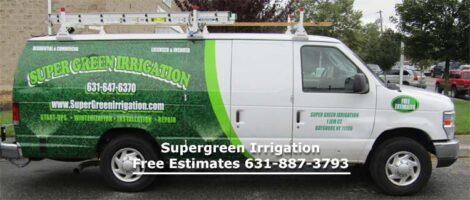This sounds too good to be true, but below are six simple adjustments to your sprinkler system that save water and don’t cost much. As the drought drags on and water prices increase, there are inexpensive adjustments you can make to your irrigation system that saves up to 30% of your water. Most changes provide instant water savings with no additional costs and take little time to understand how to make them. Let’s look at a few of them below.
There are two prime areas to focus on for water saving for your irrigation system. Number one is the irrigation schedules. We recommend Hunter smart irrigation software paired with a controller to ensure you water the correct frequency and duration. The other area is the actual irrigation system, which we are discussing today. Because even if the scheduling is perfect, it does not correct issues like too much pressure or leaks in the system. There will still be a waste, and often this waste is the easiest to correct.
1. Regular Wet Checks – A physical wet check after every mowing is best if you do not have a smart controller with flow sensing. Mowing or general landscape maintenance is often hard on the irrigation system. Emission devices sometimes are damaged or moved out of proper adjustment. Turning on and physically checking the irrigation system after each service will catch most of the breaks or minor adjustments needed.
2. Check Water Meter – When all the water is off, check your water meter to see if the blue dial (#3 in the photo) is moving. If it’s moving (spinning), there is a leak. The blue or sometimes red triangle detects even the most minor links. Finding the leak is the next issue, but at least you now know where to start. Two key points learn where the water meter is located and the water shut-off valve.
3. How To Spot A Leak – Some leaks create fountains of water and are easy to spot. Others may be slow leaks around sprinklers or small breaks in a pipe of supply tubing that are more challenging to identify. The landscape might offer some good clues. Below you can see the water puddle in the landscape shows an issue, and the other is a sign of overwatering where the grass in one area is getting much taller relative to the other grass in the landscape.
4. Sprinkler Leaks – Pop-up sprinklers have screw caps. They often are loosened by weed whips. These start slow drip leaks and move to a solid stream over time. That is an easy repair. Tighten the cap when at the time of the wet check and eliminate the wasted drips and never let the issue get big by blowing off the cap. Pop-up sprinklers also have a screw on nozzles. These blow off and are often removed by vandals. This is easy to catch and repair at the time of wet checks. Keep some extra nozzles on hand to make a quick, easy, and affordable repair.
5. Leaking Valves – When valves don’t close entirely due to debris under the diaphragm, the valves leak slowly and often create a situation like this one. Removing and cleaning a diaphragm is easy. Usually, a few screws or nuts are on the top of the valve. Remove those and pull out the diaphragm. Clean with water and replace with the same diaphragm, or better yet, purchase a replacement diaphragm, and replace the old with the new in case there are any cuts in the old one. There are a few other common issues with valves, including a loose solenoid. This can be hand tightened for a quick, easy fix. Often the bleed screw is loose or was not tightened correctly after a manual bleed. This can also be quickly corrected with hand tightening. Another common is debris between the bonnet and the solenoid. You can easily remove the solenoid and spray it with water for a quick, easy solution.
6. Pressure Is Too High
Pressure regulators are a great way to keep the pressure of an irrigation system at the correct pressure. Often irrigation systems do not have regulators, but a simple adjustment is made to keep the pressure at a level that does not contribute to water waste. The easiest way to accomplish this is to:
- Activate the valve with the controller.
- Adjust the flow on the valve with the flow control handle.
- Observe pressure reduction by looking at your emission devices.
- For example, turn the flow control handle down if watering with sprays until a dip in the water is observed. Once a visible reduction of pressure (by watching the water) is observed while the system is running, turn the flow control handle back one turn. This will slightly increase the pressure.










